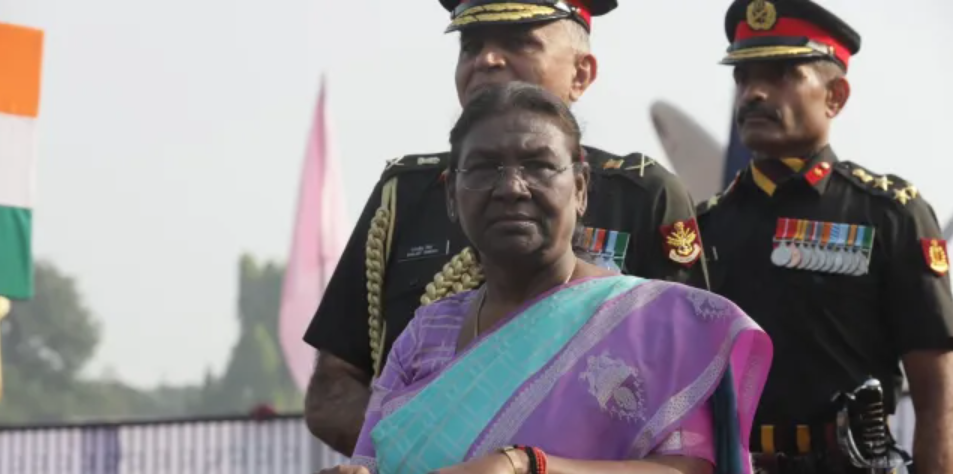The presentation of the President’s Colour is a prestigious military tradition that symbolizes the highest honour bestowed upon a military formation for its service, courage, and discipline.

President Droupadi Murmu, the supreme commander of the armed forces, is set to confer the President’s Colour to Armed Forces Medical College (AFMC) on Friday as the institute marks its platinum jubilee year. Here is a quick look at the military tradition of presenting the President’s Colour, also known as the President’s Standard, the ceremony of the presentation, and its significance.
The tradition
The presentation of the President’s Colour, also known as the President’s Standard or Rashtrapati ka Nishaan, is a prestigious military tradition that symbolises the highest honour bestowed upon a military formation for its exemplary service, courage, and discipline. Awarded by the President, who is also the supreme commander of the armed forces, this special flag signifies the unit’s distinguished history and commitment to national security. In the Indian context, the presentation of the President’s Colour also highlights the bond between the armed forces and the nation’s leadership.
The tradition of presenting the President’s Colour has its roots in tradition followed by militaries in the West, including the British, and also by the armies from India before colonial rule. Traditionally, these colours or flags denoted the location of the commanders of the particular formation. While the tradition of carrying these colours onto the battlefield has stopped, the tradition of ceremonially awarding and carrying them continues even today. The flag awarded to different military formations from the three services or those from other uniformed services has a design that signifies the role played by the formation in the security ecosystem. Some specific criteria in terms of years of service, awards and recognitions are applied before identifying the institution for the award.
The President’s Colour award ceremony is presided over by the President or by the military leader designated by the President for the event. These ceremonies are held in the presence of serving and retired military leaders of the formation and are usually marked by a ceremonial parade. After the presiding officer is accorded full military honours, the colours are mounted on an altar constructed out of drums. The flag is then sanctified in a Sarva Dharma Prarthana – an all-faith prayer ceremony performed by the religious teachers of the Army. As part of these prayers, the religious teachers – pandits, maulavis, priests and granthis – recite verses from the religious texts and pray for the troops from the formation.
The colours are handed over to an officer designated by the unit as Nishan Adhikari, at the hands of the presiding officer. After a formation receives the President’s Colour, the flag is carried with full military honours during every formal ceremony of the formation. When the President’s Colour is carried onto the parade ground, those present are required to accord the right honour – civilians by standing up and uniformed personnel by saluting.
The Armed Forces Medical College
The AFMC, often hailed as the fountainhead of medical education in the Armed Forces Medical Services of India, is a premier medical sciences education and research institution based in Pune. The state-of-the-art training and administrative infrastructure of the college not only provides the best in medical education but also gives opportunities for the holistic development of the medical cadets through its various sports and extracurricular activity clubs.
The medical cadets passing out from the institute get commissioned into the Army, Navy, and Air Force and serve with the medical unit and hospitals attached to various formations.
Established on May 1, 1948, the AFMC conducts training of medical undergraduates and post-graduates, nursing undergraduates and postgraduates, dental postgraduates and paramedical staff. The institution is responsible for providing the entire pool of specialists and super specialists to the armed forces by giving them in-service training.
Article Credit: indianexpress